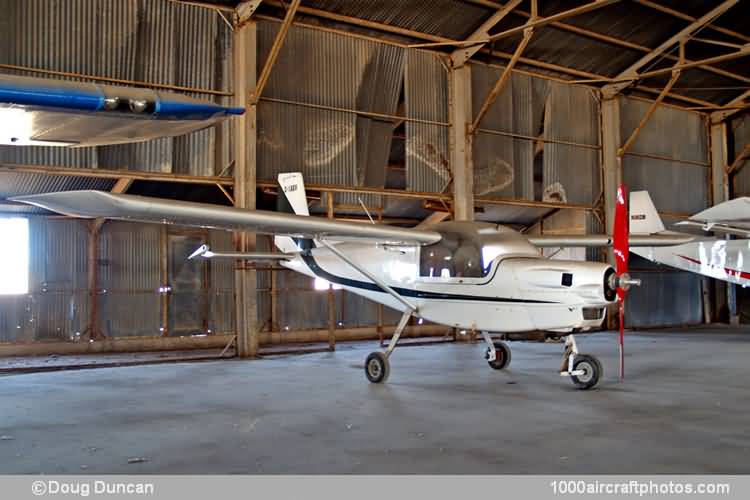07/31/2011. Remarks by Johan Visschedijk: "With the cost of new light aircraft becoming almost prohibitive for the average private owner or flying club, Richard Noble set up ARV Aviation Ltd. in December, 1983 to design and put into production the ARV Super2 (indeed, no spacing between Super and 2). The company was based at Sandown Airport, Isle of Wight and it made the first flight of the prototype Super2 (G-OARV c/n 1) on March 11, 1985.
The Super2 was a shoulder-wing side-by-side two-seater of conventional appearance with a fixed tricycle landing gear. It was built from Supral (superplastic aluminum) which permitted low-cost pressing of multi-curvature panels, but the most unusual feature was the 77 hp three-cylinder two-stroke Hewland AE.75-D engine which was fitted.
The Super2 was to be built both as a factory-complete aircraft and as a kit for homebuilders and the initial eight production aircraft were issued in kit form. Thereafter, the majority of sales were made to flying clubs, but technical problems with the Hewland engine led to the grounding of the Super2 between October, 1987 and January, 1988. By the following May, ARV had exhausted its working capital and it called in administrators on June 17, 1988, with in stock a number of unsold kits/aircraft. (In the end, British production ended with c/n 35, all designated ARV Super2).
The company was sold to Taurus Aviation Ltd. which later became Island Aviation Ltd. In November 1991 the design and manufacturing rights were purchased by Aviation (Scotland) Ltd. (ASL) of Burnbank, Scotland. A year later ASL flew a re-engined aircraft, fitted with a Mid-West Aero-Engines AE75 engine, intended production versions were the Opus 280 and its kit form, The Highlander. In March 1993 ASL received CAA certification, but was unable to find financial backing for production in Scotland.
Subsequently, in 1994, ASL and a Swedish steel company formed a joint venture, ASL Hagfors Aero AB at Hagfors, 160 mls (257 km) north-west of Stockholm, Sweden. British-built G-BNJV (c/n 33) became the prototype ASL Hagfors Opus 280, fitted with an 80 hp Bombadier Rotax 912A four-stroke engine and was reregistered SE-KYP (new c/n 33-1046). It was followed by two assembled aircraft, SE-LIZ (c/n 41-1045) and SE-LCF (c/n 40-1047), and the JAR-VLA certificate was received in March 1995. However, ASL Hagfors ceased trading before initial deliveries took place.
In September 1995 design and production rights were acquired by Highlander Aircraft Corporation of St. Paul, Minnesota, USA and registered N280KT (c/n 0001) on November 16, 1995, the prototype, designated Highlander, made its first flight in February 1996. (The aircraft was deregistered as ''destroyed'' six years later, February 6, 2002.) Reportedly Highlander sold six kits, before the type was acquired in 1999 by yet another company, SkyCraft International Inc. of Homeworth, Ohio, although in the five years the company owned the type, it did not produce it.
The present owner of the type, Opus Aircraft LLC of Stoneville, North Carolina, acquired the type in 2004, and intended first deliveries in 2009 under the designation Opus ARV Super 2 (indeed, with a spacing between Super and 2), but as of today has not flown one.
The pictured aircraft was registered to ARV Aviation Ltd. as ARV Super2 G-BNVI on September 29, 1987, the CAA cancelled the registration on October 28, 1989. A year later, September 21, 1990 it was registered to Adrianair Ltd. of London. On March 10, 1998, the registration was again cancelled by the CAA.
The aircraft appeared on the US register as N63997 on November 17, 1999, new owner was Paul V. Harper of Homeworth, Ohio (indeed, the location of SkyCraft International Inc.), it received its CofA of February 4, 2000. Harper sold the aircraft on June 13, 2002, next the aircraft was registered in Canada to Jonathan Davies of Orangeville, Ontario as C-IAGV on July 10, 2002."
